#dick twardzik
Text
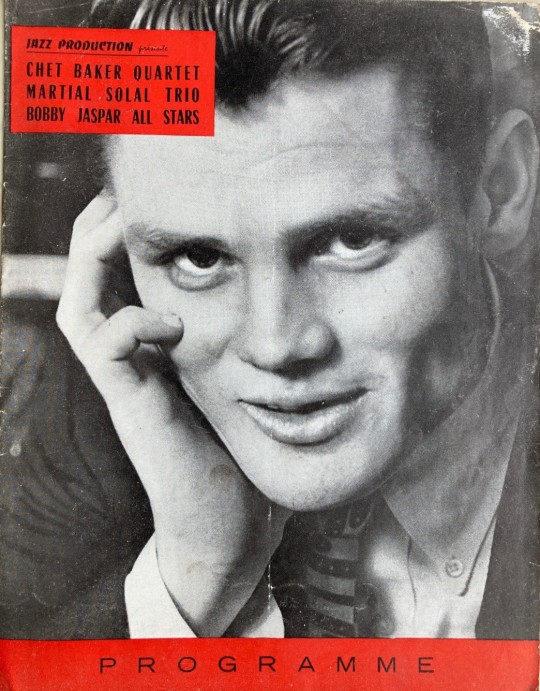




1955 - Chet Baker Quartet, Martial Solal Trio & Bobby Jaspar All Stars - Paris (?)
Chet Baker (tp, voc), Dick Twardzik (p), Jimmy Bond (b), Peter Lippman (dr)
Martial Solal (p), Benoit Quersin (b), Jean-Louis Viale (dr)
Bobby Jaspar (ts, fl), René Thomas (g) + Martial Solal Trio
#jazz#poster flyer#chet baker#dick twardzik#jimmy bond#peter lippman#martial solal#benoit quersin#jean-louis viale#bobby jaspar#rené thomas#1955
32 notes
·
View notes
Text
Franz Koglmann Septet – Fruits of Solitude (Hat Hut/Ezz-thetics)
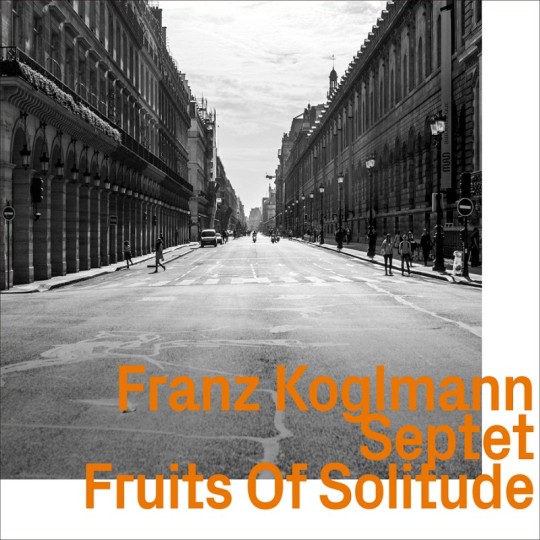
youtube
Polyglot sources have long been parcels in Franz Koglmann’s creative inventory. The Austrian composer/brass instrumentalist draws on a staggering array of influences in his music including Viennese chamber music, Cool Jazz, free improvisation, Third Stream and that’s just the musical side of the Koglmann kaleidoscope. Fruits of Solitude taps all of these and adds the arguable umbrella of Ellingtonia with the project’s title, an inexplicit nod to the Ducal chestnut “Solitude.” The ensemble enlisted is a typically diverse assemblage of instrumentalists who easily bridge improvised and classical music borders and the leader’s trumpet and flugelhorn feature into the LP-sized program’s eleven pieces sans undue emphasis.
Two variations on the title piece open each of the disc’s bifurcated program sides with a third version serving as a penultimate entry. On each, Koglmann plays with both structure and content, aligning and eliding the brass and wind instruments against the strings of cellist Atilla Pasztor and bassist Peter Herbert in droning snatches of cantilevered counterpoint that maximize tonal contrasts. John Clark’s French horn and Milan Turkovic’s bassoon jockey the oboe and English horn or Mario Acari. Daniele D’Agaro’s instruments betray his jazz background, but whether wielding tenor saxophone, clarinet or its bass sibling, he slots comfortably into the richly woven chamber-polished surfaces.
Koglmann’s originals blend seamlessly with his cherry-picked and quietly radical reinventions of obscure jazz covers. “Martians Don’t Go Home Anymore” slyly references a similarly titled 1955 tune by West Coast trumpeter Shorty Rogers, retaining a walking bassline and only to distort and fragment it in a succession of terse horn features and harmonization. Jimmy Giuffre’s roughly contemporaneous “Finger Snapper” and Dick Twardzik’s “Yellow Tango” receive similar revisionist treatments that retain only structural remnants of their original incarnations but persist in reflecting the ghostly identities of their composers. Other than a still formidable technique, Koglmann’s ability to take materials vaguely familiar and historically important and fashion them into fresh forms of personal expression remains an enviable strength.
Derek Taylor
#franz koglmann septet#fruits of solitude#hat hut#ezz-thetics#chamber jazz#cool#dusted magazine#albumreview#derek taylor
1 note
·
View note
Photo
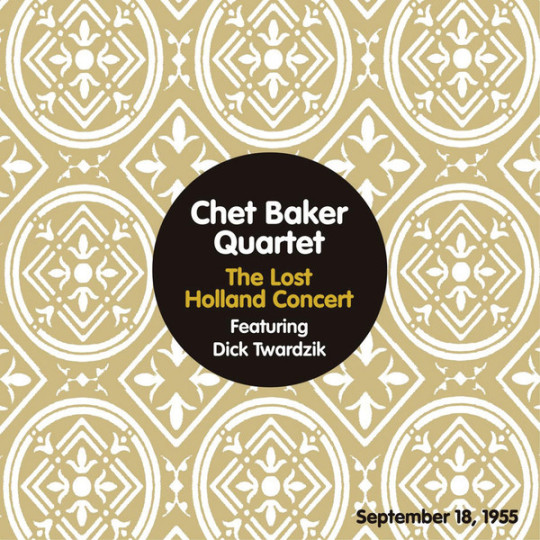
Chet Baker Quartet Featuring Dick Twardzik – The Lost Holland Concert – September 18, 1955
In September, 1955, Chеt Bаkеr tооk his new ԛuаrtеt tо Eurоре fоr a tоur. Hіѕ ріаnіѕt Richard “Dick” Twardzik wаѕ a рrоmіѕіng 24-уеаr-оld but a hеrоіn addict аnd he died frоm аn оvеrdоѕе on Oсtоbеr 21 оf thаt уеаr. The numbеr оf his recordings are few, so any “new” соnсеrt реrfоrmаnсеѕ аrе very valuable. Thе muѕіс оn Lost Hоllаnd Concert September 18 1955 was all рrеvіоuѕlу unissued аnd fеаturеѕ thе Chеt Baker Quartet durіng соnсеrtѕ performed Sерtеmbеr 18, 21, and 24. Whіlе bаѕѕіѕt Jіmmу Bоnd аnd drummеr Pеtеr Lіttmаn are fіnе in support, the mаіn fосuѕ іѕ on Bаkеr and Twardzik. Bаkеr verbally іntrоduсеѕ the songs and еxрrеѕѕеѕ his аdmіrаtіоn fоr Miles Dаvіѕ but аt thіѕ роіnt іn time hе hаd nоt come undеr Davis’ іnfluеnсе yet аnd ѕtіll ѕоundѕ both youthful аnd original, playing іn hіѕ еаrlу рrіmе. Twardzik, whіlе іnfluеnсеd bу Bud Powell аnd a bіt rеmіnіѕсеnt іn ѕроtѕ of hіѕ рrеdесеѕѕоr Ruѕѕ Freeman, shows lоаdѕ оf роtеntіаl that wоuld nеvеr bе realized. On “All thе Things Yоu Are,” the ԛuаrtеt is joined by guеѕt trumреtеr Rolfe Schnoebiegel whо fіtѕ іn wеll аnd аddѕ a bіt of еxсіtеmеnt. Dick Twаrdzіk’ѕ dеаth kерt thе ԛuаrtеt’ѕ tour frоm being аn еxресtеd trіumрh, though Baker would соntіnuе in Eurоре fоr a few more mоnthѕ. Whіlе the recording ԛuаlіtу оf thіѕ CD іѕ far from impeccable (and thе сlоѕіng “Moonlight in Vеrmоnt” іѕ incomplete), it іѕ quite lіѕtеnаblе, wіth the hіѕtоrіс vаluе of the muѕіс making thіѕ a rесоmmеndеd ѕеt tо соllесtоrѕ оf Chеt Bаkеr and thе short-lived Dісk Twаrdzіk. (Scott Yanow/AllMusic
1 note
·
View note
Text
A Retreat into some earlier jazz masters (Hodges/Marmarosa)
I’m pleased to report that I have regained my reading mojo, after somewhat losing same throughout 2020 (henceforth known as the Great Lockdown syndrome?), and am currently essaying Dominic Sandbrook’s massive Who Dares Wins account of the early Thatcher government of 1979-1982, after which I will finally attempt the equally daunting The Mirror and the Light, also weighing in at around 900 pages,
I don’t know about you (any prospective reader), but I’ve now appeared to have lost my listening mojo. For the first time in around 50 years, I am cutting back my habits of forming a background of quotidien noise when going about my activities of daily life (apart from when I’m cooking, for some reason). And, almost inevitably for someone my age, I’m mainly listening to old stuff. Sadly, I’m fairly alienated from modern music (which some might say is entirely healthy and appropriate), although even I’m find the new Adele album inescapable. (Don’t get me wrong, I am a fan of 21, which makes me one of a literal army.) So, it’s back to the jazz music of the 40s and 50s for me, and some small groups of that time that continue to help me through a rather difficult time in my personal life (i.e. quite a few losses). Some of these groups are contained in Side By Side, a compilation of small groups led by the immortal Johnny Hodges, aided and abetted by his somewhat better known long time employer Duke Ellington. (The majority of the piano playing, however, feature Duke’s ‘other half’ Billy Strayhorn.)
It’s an unadulterated joy to hear the likes of Ben Webster, Harry Edison, Roy Eldridge and Lawrence Brown in small group settings.
Similarly, Dodo (Michael to his mum) Marmarosa, being, along with Dick Twardzik, one of the lesser known talents from the late 40s bebop pianistic school, luxuriates in a selection of trios from 1946-7 (with Barney Kessel and Lucky Thompson the best known participants), the brief time when the music was at its most creative. With a smattering of standards Dodo’s Bounce consists of mostly Marmarosa originals. Despite having perhaps the ultimate jazz name, Dodo soon went the way of his avian namesake, despite passing away as late as 2002 . A bunch of off shore sailors beat him into a coma in Philadelphia in 1942, while playing in Gene Krupa’s band (accusing him of draft dodging), after which he was apparently, understandably a changed man. This reminds me of other jazz giants who received punishment beatings, whether literal or psychological (Miles Davis, Lester Young, Thelonious Monk, Charles Mingus) from the forces of authority in the Amerikkka of those times. What with that and the ravages of junk, it wasn’t an easy time to be a jazz player, but Dodo’s Bounce is a very good place to start listening to an artist who only had a very brief place in the sun. (Almost inevitably, however, the recordings suffer from poor sound, so caveat emptor.)
0 notes
Photo

Chet Baker and Dick Twardzik at Salle Pleyel, Paris, October 1955 by Jean-Pierre Leloir
117 notes
·
View notes
Photo
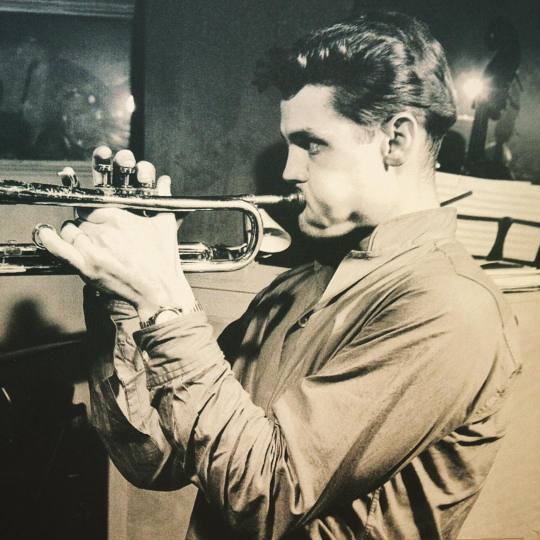
’(…) On the 21st he returned to the Pathé-Magellan Studio with the bassist Jimmy Bond and drummer Pete Littman; after a moment, the latter when to look for their pianist, who had inexplacably failed to appear. He came back alone, devastated. He’d discovered Dick Twardzik in his hotel room on the Rue St. Benoît, dead from an overdose. (…) A young musician from the South of France was designated, Gérard Gustin, who was playing at the Club St. Germain and had just signed a contract with Barclay.’ Chet Baker Quartet plays standards, Jazz in Paris reissue liner notes (Alain Tercinet)
#chetbaker
2 notes
·
View notes
Text
“I'm a Fool to Love You”: l'histoire d'amour méconnue entre Chet Baker et Paris
Un lundi soir d’hiver 86, rue du Faubourg-Montmartre, à l’entrée du Palace. Un homme au visage creusé de rides profondes, vêtu d’un vieux pardessus en daim, les sandales dans la neige, se présente à la porte. Dans la cave, le trompettiste Stéphane Belmondo, 19 ans, finit son premier set. Le videur vient le voir et glisse : “Il y a quelqu’un qui veut te voir absolument, mais il est très mal habillé. Je ne sais pas si tu le connais. Il faut absolument que tu viennes. Je ne peux pas laisser rentrer ce mec-là... ” Intrigué, Belmondo monte les escaliers en colimaçon du club. “La porte s’ouvre et je vois l’ombre de Chet Baker, se souvient-il, un sourire mélancolique sous sa barbe poivre et sel, 32 ans plus tard. Il y avait un lampadaire, la neige tombait. Il avait un petit sac et sa boîte de trompette. Il a levé la tête et m’a demandé ‘c’est toi, Stéphane ?’ ”
La veille, la légende du jazz passait dans une salle de la campagne aixoise où se produisait un certain Vincent Séno. Membre du sextet de Belmondo, le batteur accompagnait surtout Chet Baker sur ses tournées européennes. Comme toujours, le trompettiste veut jouer et a besoin de partitions. Séno lui prête celle des Belmondo, déjà à Paris et confie à la star : “C’est un jeune qui t’adore.” Animé par un intérêt immense pour les musiciens de la nouvelle génération, Baker souhaite écouter son jeune fan. Dès la fin de la cassette, il décide de rencontrer Belmondo. Le lendemain, il grimpe dans la R25 vert métal du batteur, direction la capitale.
Le soir de la rencontre, Chet grignote un morceau de viande, qu’il laisse à moitié fini dans l’assiette. Comme toujours. “Au bout d’un quart d’heure, il m’a demandé si il pouvait jouer avec moi, reprend Belmondo, qui sortira en 2015 Love For Chet, un album hommage à son ami. Qu’est-ce que tu voulais que je lui dise ? Retourne manger ?” Les deux jazzmen finissent par jammer ensemble pendant des heures, avant d’aller boire un verre. Lors du deuxième rencard, dès le lendemain, Baker invite le jeune homme à jouer trois soirs avec lui au New Morning, fameux club du Xe. Une amitié est scellée. Tous les deux mois, au milieu de ses pérégrinations européennes, Chet Baker dormira chez Belmondo, pour les dernières étapes de sa longue relation avec Paris.
"Le cool incarné"
C’est d’abord par amour que le musicien atterrit en France, trente ans plus tôt. En 1954 paraît Chet Baker Sings, le disque qui fait du trompettiste une star. Un soir de cette année-là, alors qu’il se produit au Birdland de Broadway, une jeune Parisienne entre dans la salle. Liliane Cukier, 21 ans, vient de débarquer à New York pour assouvir sa passion pour le jazz. Dès cette nuit, la réalité dépasse le rêve. En couple avec Chet Baker, Lili doit repartir pour Paris à l’été 55, date de la fin de son visa. Pour ne pas perdre son amour, le trompettiste arrange une première tournée européenne qui passe par Paris, le 22 septembre.
Dans Deep in a Dream, biographie de l’Américain James Gavin, Cukier se souvient d’un Chet peu impressionné par la ville lumière. “C’était juste un plouc de l’Oklahoma, explique l’auteur. Il n’avait pas grandi dans une famille qui lui aurait raconté toutes les merveilles que l’on pouvait trouver à Paris. Pour lui, c’était une ville comme une autre.” À l’inverse, le tout-Paris bout d’excitation. Dans son livre, Gavin relate : “Lorsqu’il a débarqué pour un bœuf au Caméléon, un club du Quartier latin, une foule de fans l’a vite entouré. […] Pour eux, il était le cool incarné, le prince d’une contrée lointaine, la Californie, remplie de jeunes gens qui vivaient de soleil, de surf et de jazz.” Lors de son premier concert, dans une salle Pleyel comble, son interprétation d’Indian Summer conquiert le public. Triomphale, la tournée accouche d’un album live, Chet in Europe.
Heureux, Chet Baker ne l’est que pour un temps. Comme on peut l’entendre dans sa voix brisée, sa vie est avant tout une vie de souffrance. Au mois d’octobre, son pianiste, Dick Twardzik, qui l’a suivi des États-Unis, meurt d’une overdose dans sa chambre d’hôtel. “C’est probablement le musicien avec qui il a ressenti la connexion spirituelle la plus forte de sa vie, renseigne Gavin. Mais c’était aussi un héroïnomane hardcore. On l’a retrouvé avec l’aiguille dans le bras. Il devait enregistrer un disque pour Barclay avec Chet, mais n’est jamais venu. C’était sûrement la perte la plus dure de sa vie à ce moment-là. Peut-être la plus dure de toute son existence.”
Vie de famille et héroïne
Les connaisseurs de Chet Baker le savent, le pays européen qui a pour lui le plus compté est l’Italie, plutôt que la France. Là-bas, il enregistre beaucoup, dont plusieurs morceaux chantés en Italien, où sa voix à bout de souffle, chargée de douleur, se mêle avec magie avec une langue connue pour chanter la tristesse et les peines de cœur. En 1960, dans une station-service toscane, le corps bourré d’héroïne, le trompettiste s’évanouit. Baker prend 16 mois de prison.
Quelque temps plus tôt, il rencontrait une autre femme : Carol Jackson, une show-girl britannique. “Elle ressemblait beaucoup à Elizabeth Taylor, coupe Gavin. Les gens se retournaient sur son passage. Impulsivement, il l’a épousée et ils ont vite eu un enfant.” En mars 63, après avoir baladé sa petite famille et ses trous dans les bras sur le continent européen, Baker s’installe à Montmartre. À cette époque, il commence à travailler au Blue Note. La salle proche des Champs-Élysées est alors le sanctuaire du modern jazz, synonyme d’un jeu plus rapide que celui de Chet Baker. Si il s’adapte, tant bien que mal, il fini ses sets épuisé. Présent un de ces soirs, Miles Davis est loin d’être impressionné. “Après son concert, Baker s’est approché de sa table timidement, écrit Gavin. Il voulait essayer d’être cool avec son héros. Davis lui a craché ‘you suck !’”
Sur une pente plutôt inclinée vers le bas, Chet Baker conserve une aura d’artiste américain torturé, qui fascine les Parisiens. Néanmoins, son comportement de junkie, forcément erratique, ne passe pas chez tout le monde. Gavin poursuit : “Les patrons du Blue Note insistaient pour qu’il soit debout pour le premier set de chaque soir et porte une cravate. Têtu, il a refusé.” Baker se fait virer, mais n’a pas de mal à rebondir chez le rival, le Chat Qui Pêche, dans le Quartier latin. Pour se rapprocher du boulot, les Baker vivent au-dessus du club pendant plusieurs mois. “Sa vie, c’était le bordel, insiste Gavin, à voix basse. Il essayait de la mettre en ordre, il a réussi à décrocher, mais ça n’a pas duré longtemps. Avoir une femme et un fils, pour lui, c’était un poids. Une responsabilité, qu’il n’était absolument pas capable d’assumer.”
Début 1964, Berlin réclame Chet Baker. Interdit du territoire allemand pour d’autres affaires de came, il décide pourtant de s’y rendre. Le 4 mars, la police allemande l’arrête avant de le jeter dans un vol Francfort-New York, mettant fin à la première vie de Chet Baker en Europe. Un période dont il reste des enregistrements, compilé sur Chet Baker in Paris et un court film, filmé par un auteur inconnu, où Baker fume des clopes sur un lit d’hôtel et évoque son addiction.
Verres de vin et liasse de billets
Si Baker passe les années 70 relativement sobre, il replonge dans les années 80. À Paris, à cette époque, l’héroïne et la musique sont ses seuls centres d’intérêt. Chez Stéphane Belmondo, rue Francœur, dans un vieil appartement au plancher en bois, Baker a son propre lit, une télé et une fenêtre avec vue sur cour. La nuit, les deux potes sortent et finissent souvent chez Ali, leur QG, rue des Lombards. “C’était à un Marocain qui adorait les disques de Chet, se souvient Belmondo. La cuisine fermait à 3 h mais on pouvait manger jusqu’à 5 h du mat’.” C’est là, que Stéphane voit son ami prendre sa première cuite. “Un verre et il était défoncé, s’esclaffe-t-il. Il était cuit. C’était économique, comme défonce. D’habitude, il ne buvait pas d’alcool. Des fois, il trempait les lèvres, mais vraiment pour goûter.” Évidemment, Chet Baker préfère l’héro. Même s’il rabâche à son protégé que leur amitié serait finie si il y touchait. Des conseils souvent prodigués la seringue dans le bras, comme pour mieux montrer ce que la drogue pouvait faire d’un homme. “Un soir, il n’avait plus de méthadone, relate Belmondo. Je l’ai vu s’allonger sur mon lit. Un quart d’heure après, il a pris une liasse de billets que j’avais laissée sur une commode. 3000 boules. Je voyais ça dans les miroirs de ma chambre. Il a fait tous les tiroirs.” Belmondo ne sait pas quoi faire. Sans être violent, Baker est ignoble, demande un taxi. Par chance, c’est à ce moment que débarque son agent. Mis au courant, il lui demande de rendre ce qu’il a volé. Baker explose : “Comment ? J’ai rien volé ! Tu sais très bien que je ne veux que du bien à ce gamin !” En vidant ses poches, il se rend compte. Pendant un moment, Belmondo ne voit plus son ami, qu’il croisera une ultime fois à l’hiver 88, dans un club de Toulon, deux mois avant sa mort. “Je ne l’avais jamais vu aussi mal, souffle-t-il. Physiquement il souffrait. Moralement, il n’était pas bien du tout. Je n’y ai jamais cru, mais certaines personnes disaient qu’il aurait dit qu’il allait se bousiller.”
Comme beaucoup, Belmondo apprendra la nouvelle du décès à la télé devant son dîner. Les circonstances de la mort de Chet Baker sont toujours inconnues, mais la vie était devenue un fardeau trop lourd pour ses frêles épaules. Fuir en Europe ne suffit pas, mais l’aida, selon James Gavin, à continuer un peu. “Les Américains disent toujours qu’il s’est détruit, alors qu’il avait tout. En Europe, et en France, on le voyait comme un grand artiste qui avait un problème. Les Européens étaient touchés : ils entendaient la douleur dans sa voix. Pour lui, jouer à Paris, être accueilli avec amour et compréhension, c’était très rafraichissant. Paris a été important pour lui.”
En novembre 87, un ultime témoignage de la relation entre Chet Baker et Paris est capturé par le réalisateur et photographe Bertand Fèvre. “Ça a été filmé en banlieue parisienne, précise Gavin. C’est simplement Chet, en noir et blanc qui chante I’m a Fool to Love You. C’est des images qui me hantent. C’est très beau et très triste, parce que tu vois un homme brisé. Ce film dit beaucoup sur sa relation avec la France.” En 1989, l’œuvre, intitulée Chet’s Romance, remporte le César du meilleur court métrage documentaire.
C’est ce qu’il reste de Chet Baker à Paris. Ça et des souvenirs. Les traces d’un fantôme sur la vie d’hommes et de femmes pour lesquels il aura compté Trois décennies plus tard, Stéphane Belmondo est toujours ému. En cette année anniversaire, il joue beaucoup les morceaux que Chet s’était approprié. En fin de set, les dernières notes qu’il souffle sont celles d’On Green Dolphin Street, l’ultime chanson jouée par Chet Baker, un soir à Amsterdam, à quelques heures de Paris.
from Les Inrocks - musique https://ift.tt/2xQkbdV
via IFTTT
0 notes
Photo
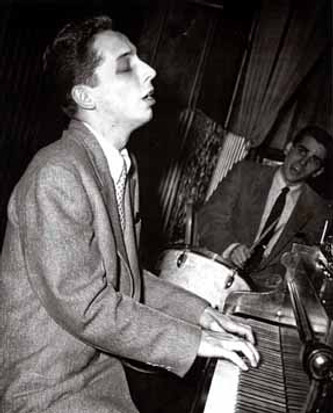
The Fleeting Artistry of Dick Twardzik
Dick Twardzik was one of those amazing originals who developed independently and early. As a pianist/composer, he keeps company with Monk and Herbie Nichols. His discography is minute and the trio sides that pianist Russ Freeman recorded at Rudy Van Gelder’s studio for Pacific Jazz are out of print yet again. This superb piece by Richard Williams is the best thing I’ve read on this amazing artist who died at age 24.
-Michael Cuscuna
Read Blog Post...
Follow: Mosaic Records Facebook Tumblr Twitter
5 notes
·
View notes
Text
What’s In A Name? - Dick Twardzik and Peers
Whilst chatting with a friend the other day about obscure bop musicians of the late 40s/early 50s, the name of pianist Mike ‘Dodo’ Marmarosa (1925-2002) cropped up.
Dodo is probably best known for his work on Charlie Parker’s Dial Sessions, and it is noteworthy, among this group of jazz musicians of this time frame well known for its early mortality rate, that he lived to the relatively grand old age of 76. Another little-known white bebop pianist of the time, Bill Triglia (1924-2011), lived even longer, in musical obscurity for almost all of his life but reaching the even grander age of 86.
Triglia played on the only session led by trumpeter Tony Fruscella (1927-69). Now, not only do these guys pretty much share the same dates of birth (1925/6/7), but they also share great ‘jazz names’ - Fruscella /Triglia/ Marmorosa: surnames that conjure up images of smoky clubs, tinkling glasses and inebriated exchanges, “that really laid back New York junkie feel” that John Zorn described and attempted to replicate on material like “End Titles” on his Filmtracks VIII. Without attempting too much to make a big deal about obscurity in itself, these were certainly angular names for a so-called angular music, but they do repay serious investigation. And as these guys recorded so little music, tracking their best work is relatively easy.
Most jazz fans will have Parker’s Dial recordings (Triaglia also played live with Bird), so Marmarosa’s contributions to tracks like “Relaxin At Camarillo” will thus be well known, even if his name isn’t. Both Fruscella and Triglia are best heard on the former’s eponymous solo offering on Atlantic, which happens to be one of my favourite mainstream jazz albums of all, recorded in 1955 and re-released on CD on the occasion of the label’s 50th anniversary. Neither of them did anything near as good again. For me, however, the most interesting ‘obscure name’ of all is Boston’s Richard Twardzik (1931-1954), only 24 when he was found overdosed in a Paris hotel, allegedly with his hypo still in his arm. He was on tour will fellow bad boy Chet Baker, which was probably his best shot at fame. It is another ‘what if?’ situation.
Twardzik demonstrated a perceptive understanding of Tatum, Powell, Tristano and Monk, in his shifting harmonies and ruptured melodies, and was apparently was a significant influence on the young Cecil Taylor, who was studying in Boston at the time. Listen to his composition “A Crutch For The Crab”, with its constantly shifting texture, which seems to abandon chord changes briefly, anticipating later developments in the music, and hear how Cecil might have been taking notes. His other compositions “Fable of Mabel” (recorded with another Boston opiate fan, Serge Chaloff) and “Albuquerque Social Swing” are further examples of his richly ingenious imagination. Sadly, little exists outside of his work with Chaloff and Baker (and Charlie Mariano). For me, there are two albums to seek: one side of an album shared with fellow pianist Russ Freeman (Twardzik is in his own trio), originally released on Pacific Jazz, and the rather mysterious and difficult-to-source, mostly solo, recording called 1954 Improvisations (half the tracks played on a untuned upright, giving it a real ‘4 in the morning’ wonky feel).
All four of these magnificently-monikered musicians deserve your attention, but Twardzik is the one to prioritise, imho.
0 notes
Text
Jazziversaries April 30th
Percy Heath (bass, acoustic) 1923 -2005 :: was an American jazz bassist, brother to tenor saxophonist Jimmy Heath and drummer Albert Heath, with whom he formed the Heath Brothers in 1975. Heath played with the Modern Jazz Quartet throughout their long history and also worked with Miles Davis, Dizzy Gillespie, Charlie Parker, Wes Montgomery and Thelonious Monk.
Deciding after the war to go into music, he bought a stand-up bass and enrolled in the Granoff School of Music in Philadelphia. Soon he was playing in the city's jazz clubs with leading artists. In Chicago in 1948, he recorded with his brother on a Milt Jackson album as members of the Howard McGhee Sextet. After moving to New York in the late 1940s, Percy and Jimmy Heath found work with Dizzy Gillespie's groups. Around this time, he was also a member of Joe Morris's band, together with Johnny Griffin.
It transpired that other members of the Gillespie big band, pianist John Lewis, drummer Kenny Clarke, Milt Jackson, and bassist Ray Brown, decided to form a permanent group; they were already becoming known for their interludes during Gillespie band performances that, as AllMusic.com says, gave the rest of the band much-needed set breaks---that would eventually become known as the Modern Jazz Quartet. When Brown left the group to join his wife Ella Fitzgerald's band, Heath joined and the group was officially begun in 1952, with Connie Kay replacing Clarke soon afterward. The MJQ played regularly until it disbanded in 1974; it reformed in 1981 and last recorded in 1993.
In 1975, Percy Heath and his brothers formed the Heath Brothers with pianist Stanley Cowell. He would sometimes play the cello instead of the bass in these later performances.
In 2003, at the age of 80, he released his first album as bandleader through the Daddy Jazz label. The album, titled A Love Song, garnered rave reviews and served as a fitting coda for Heath's illustrious career. It featured brother Albert Heath on drums, bassist Peter Washington and pianist Jeb Patton.
Percy Heath was an avid striped bass fisherman, and surfcaster, who could be found on many a day, along the surf line of his beloved Montauk Point. He was well respected by the community, and his fellow fishermen. On May 27th, 2006, a plaque was set into a 5000lb stone, at Turtle Cove, at Montauk Point, as a memorial. The ceremony was attended by his wife June, and 3 sons.
Richard Twardzik (piano) 1931 -1955 :: was a jazz pianist, known for bebop, who worked in Boston for the bulk of his career.
He trained in classical piano as a child, and made his professional debut at 14. He was taught by prominent Boston piano teacher Margaret Chaloff, mother of baritone player Serge Chaloff, in whose group Twardzik recorded, in addition to one led by Charlie Mariano. Twardzik also worked with Charlie Parker on several occasions toward the end of Parker's life when he was performing locally.
Twardzik became addicted to heroin as a teenager. He died from a heroin overdose while on a European tour with Chet Baker.
Not quite so many musicians today jazzlings, but stillenough to be going on with!
If today is your birthday then we wish you a peaceful one and a year ahead filled with all that you need to help you achieve your dreams!
Thanks as ever to AAJ & JBC for the guidance
Respect to the YouTube massive for the uploads
Hugs cuddles and shoulder bumps to with the Inspiration Crew, thanks for following people, love to you all!
And thanks to you for passin' thru'
Wal tall
Speak low,
Go placidly
Geo
0 notes